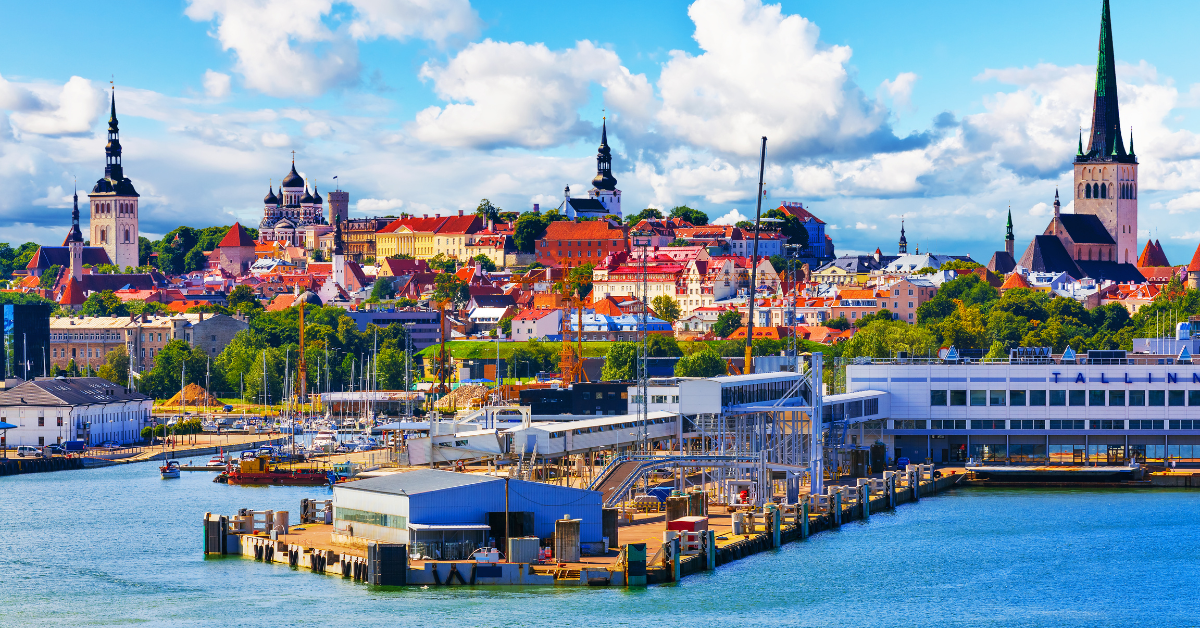Estonia, though small in size, carries a unique identity shaped by history, nature, digital innovation, and sports. In Japanese, the country is sometimes represented by the Chinese characters “愛沙尼亞,” a transcription that not only reflects sound but also conveys a sense of exotic charm. This article explores the meaning of this representation and examines the varied perceptions Japanese people have of Estonia.
The Chinese Character Representation “愛沙尼亞”
The Chinese character representation of Estonia, “愛沙尼亞,” is derived from phonetic transcription. In modern Japan, it was once common practice to render foreign place names into Chinese characters, often borrowing from Chinese phonetic transcriptions. “愛沙尼亞” is one such example that took root during this period.
Visually, the characters “愛” (love), “沙” (sand), “尼” (nun), and “亞” (Asia) together evoke both softness and exotic charm. Today, the common usage is the katakana spelling “エストニア,” but in older academic texts and newspapers, “愛沙尼亞” can still be found.
| Representation | Reading | Context of Use |
|---|---|---|
| エストニア | Esutonia | Widely used in modern Japan |
| 愛沙尼亞 | Aishania | Found in historical or academic documents |
Japanese Perceptions of Estonia’s Nature and History
For many Japanese people, the first impression of Estonia lies in its abundant nature and medieval cityscapes. With more than half of the country covered by forests and numerous lakes and wetlands, Estonia is often imagined as a “country where nature breathes.”
The capital city Tallinn’s Old Town is registered as a UNESCO World Heritage Site, preserving cobblestones and city walls from the Middle Ages. Japanese visitors frequently describe it as “a town straight out of a fairy tale,” a special experience of stepping directly into European history.
Estonia as a Leading IT Nation
Estonia is globally recognized as a pioneer of the digital society, and in Japan it is often referred to as a “small IT powerhouse.” Its early adoption of online administrative procedures and internet voting is seen as a symbol of modern efficiency.
The e-residency program, which allows foreigners to establish companies online from abroad, is especially attractive to Japanese entrepreneurs. The coexistence of medieval cityscapes and cutting-edge technology leaves a strong impression on Japanese observers.
Japanese Impressions of Estonia Summarized
| Perspective | Features | Japanese Impressions |
|---|---|---|
| Nature | Rich in forests and lakes | Feels peaceful and Nordic |
| History | Medieval city of Tallinn | Like stepping into a storybook |
| IT | E-government, startups | A futuristic, convenient country |
| Culture | Nordic cultural elements | Simple and refined lifestyle |
Sports in Estonia
Sports also shape perceptions of Estonia. The country is known for excelling in winter sports, especially cross-country skiing, where it has won medals at the Olympics. Ice hockey, athletics, and basketball are also popular, reflecting the broader European sports culture.
| Sport | Characteristics | Japanese Impressions |
|---|---|---|
| Cross-country skiing | Olympic achievements | A country strong in winter sports |
| Ice hockey | Domestic leagues are active | Northern toughness and strength |
| Athletics | Produced notable throwers | Powerful athletes |
| Basketball | Very popular domestically | European-style competition |
Japanese Views on Daily Life and Culture in Estonia
Beyond tourism and IT, Japanese people also notice aspects of daily life and culture, particularly food and lifestyle. Estonia is often described as “simple yet healthy.”
| Aspect | Features | Japanese Perceptions |
|---|---|---|
| Cuisine | Rye bread, fish-based dishes | Healthy and natural |
| Housing | Many wooden homes | Harmony with nature |
| Education | Widespread English education | Internationally oriented |
| Transportation | Well-developed public transport | Safe and convenient |
Similarities and Differences Between Estonia and Japan
Japanese people feel both familiarity and novelty when comparing their own country to Estonia.
| Perspective | Similarities | Differences |
|---|---|---|
| View of nature | Four distinct seasons | Longer, colder winters |
| Culture | Emphasis on simplicity | Strong Nordic influence |
| Society | Value education highly | More advanced digitalization |
| Lifestyle | Safety-conscious | Much smaller population |
Conclusion
The Chinese character name “愛沙尼亞” is a historical phonetic transcription that still carries a unique resonance and charm. To Japanese people, Estonia is a country that embodies the richness of nature and history, while also standing out as an IT leader. In addition, its achievements in sports and distinctive cultural lifestyle broaden the ways in which the country is perceived.
Whether through travel, business, or cultural exchange, encountering Estonia provides Japanese people with an image of a multi-faceted and profound nation. Just as “愛沙尼亞” combines the old and the new, Estonia itself offers a blend of tradition and innovation, promising discovery and learning for those who explore it.






